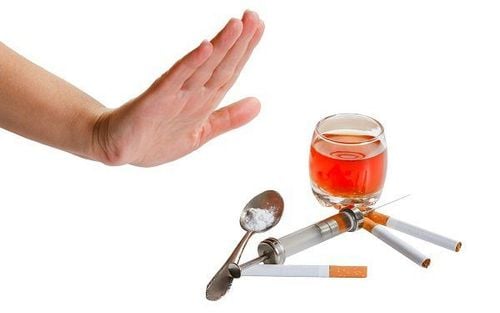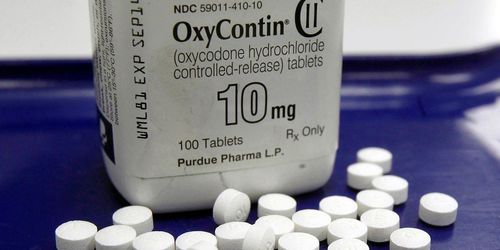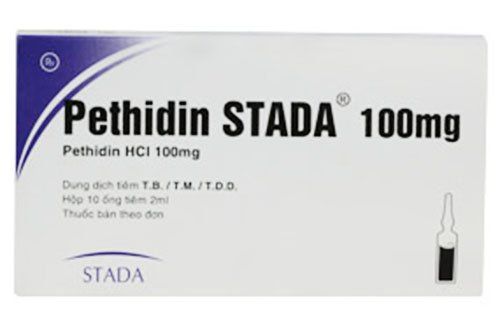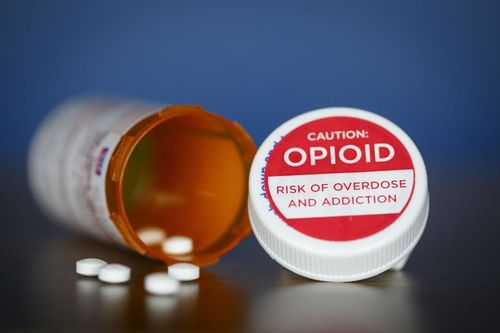This is an automatically translated article.
Opioid pain relievers are widely used to relieve moderate to severe pain for many reasons when other pain relievers are ineffective, contributing significantly to improving the patient's quality of life. . However, using this class of drugs also carries serious risks such as misuse, abuse, addiction, overdose, and even death.
1. Some general information about Opioid pain relievers
Opioid pain relievers are often used in cases of patients who have just undergone surgery, severe trauma or to relieve chronic pain. Painkillers that are purified from the opium poppy are called opiates. The man-made versions of these drugs are opioids, but that word is commonly used to refer to all forms of opiates. Opioid analgesics and opiates have the same mechanism of action.
Opioids are addictive substances that help block the sensation of pain. Milder forms of opioids can also help relieve coughing or reduce severe diarrhea.
2. Methods of using Opioid pain relievers
Depending on each case, there are different methods of using the drug:
Tablets or oral solution. Nasal spray. Skin patch. Tablets are placed under the tongue or between the gums and cheeks. Tablet set. Intravenous drugs. Intramuscular injection. Epidural injection. Inject the drug continuously through the catheter. Opioid pain relievers come in two forms, short-acting and long-acting. The short-acting category typically treats opioids as the sole pain reliever, or combines the opioid with another pain reliever, such as acetaminophen or ibuprofen. This medicine starts to work in about 15 to 30 minutes, and lasts for 3 to 4 hours.
Long-acting opioid pain relievers are suitable for pain from major trauma or surgery, and are often prescribed for pain that lasts only a few days.
In case the patient has moderate to severe pain for a long time, the doctor will prescribe pain relievers with longer acting, with stable pain relief from 8-12 hours and must be taken. regularly scheduled.
Short-acting opioid pain relievers are also used in long-term treatment as a “lifesaving medicine” at times of severe pain.

Thuốc giảm đau chứa opioid phù hợp với những cơn đau do chấn thương nặng hay phẫu thuật
3. How do Opioid pain relievers work?
Opioids attach to receptors - part of cells - found in the brain, spinal cord and other parts of the body. They reduce pain signals transmitted to the brain and reduce pain sensation.
3.1. Opioid pain relievers: Some common Opioid pain relievers include:
Codeine Fentanyl Hydrocodone Methadone Morphine Oxycodone Oxymorphone Tapentadol 3.2. Side effects Opioid analgesics slow breathing, heart rate and lower blood pressure, so patients should carefully consult their doctor before using this drug, especially when taking it with other drugs.
In addition, there are some side effects to note as follows:
Constipation. Dizzy. Nausea. Cognitive and memory impairment. Vomit. Some medications can also affect your ability to drive.
3.3. Drug dependence and tolerance Drug dependence is very common when people use a particular drug for a long time. Once physically dependent on a drug, if stopped, the patient will experience withdrawal symptoms such as:
Restlessness. Muscle pain, bone pain. Insomnia. Diarrhea. Vomit. Chills, goosebumps. Involuntary foot movements. Drug dependence often goes hand-in-hand with tolerance, due to the need for higher doses of the drug to have the same effect. But higher doses often lead to more dangerous side effects. To avoid this, the doctor can change the type of Opioid pain reliever the patient is taking or add another pain reliever. In addition, several other pain relievers may be used.

Để tránh phụ thuộc thuốc bác sĩ có thể thay thuốc giảm đau nhóm Opioid hoặc thêm thuốc giảm đau khác vào.
Can't stop taking the drug. Feeling anxious, moody, depressed, or disinterested in things. Bake all your money on drugs. Lying, hiding or stealing for drugs. Slurred speech or feeling agitated. Neglect work, family and appearance. Tolerance and physical dependence on drugs are very common in patients who use opioids, however, patients can be physically dependent on the drug but not addicted. About 8-12% of people taking opioids experience an opioid use disorder. Opioid drugs work very well in reducing pain, but risks and side effects always go hand in hand with drug use. Always consult your doctor when using the drug, only use the drug according to the type and dose prescribed by the doctor. To be on the safe side, when you have health problems and intend to use the drug. In this case, you should go to a medical facility to see specialist doctors for examination and treatment advice and prescriptions. Vinmec International General Hospital is a high-quality medical facility in Vietnam with a team of highly qualified medical professionals, well-trained, domestic and foreign, and experienced. A system of modern and advanced medical equipment, possessing many of the best machines in the world, helps to detect many difficult and dangerous diseases in a short time, supporting the diagnosis and treatment of effective doctors. most fruitful. The hospital space is designed according to 5-star hotel standards, giving patients comfort, friendliness and peace of mind.
Please dial HOTLINE for more information or register for an appointment HERE. Download MyVinmec app to make appointments faster and to manage your bookings easily.
Reference source: webmd.com













